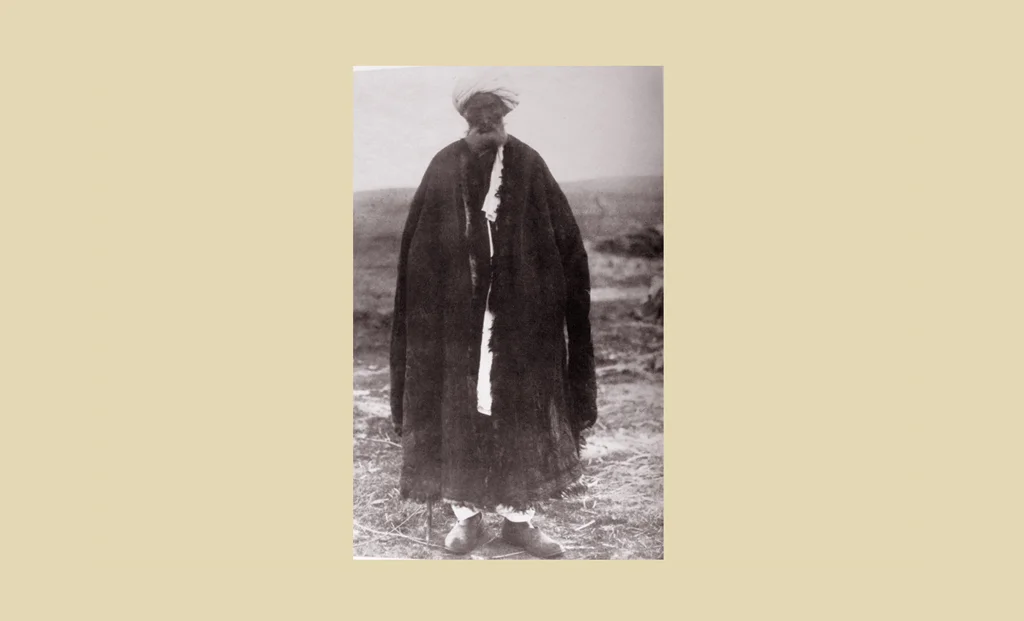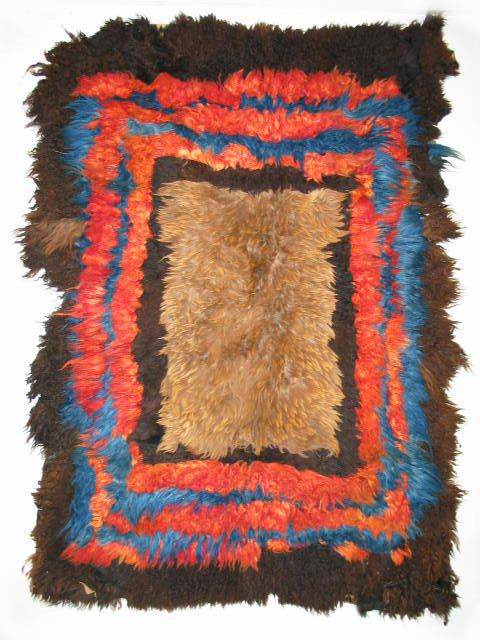Hazara Fur Coat - Posteen Circa 1927
Robert Cobcroft
Hazara man sporting a well used coat similar in styling to the Pashtun Skin Coat of 1867 called a posteen. The edge of this coat appears to be embroidered with a narrow band using the recumbent S motif repeated along it's length. The fur is facing inwards and the outside of this posteen is covered with a patterned fabric, the lining being made from karakol sheep skin.
In parts of Central Asia, particularly in colder areas like the Afghan Pamirs.Bear skin, goat skin and unborn Karakul lamb were the preferred choices for posteens like the one worn by the Hazara man in the picture above.
Hugo James likened Posteens to a Polka Jacket when he visited Dera Ishmael Khan in 1849. Acording to Hugo James, Bear Skin was as a favoured material for posteens in Afghanistan.
"The Posteen is a very comfortable kind of overcoat, a most valuable addition for those employed on any night duty; it reaches down to the knee, and buttons all up the centre, leaving the arms free. They are generally constructed of bear's or goats' skin, but a few, and the most valuable, are made with the skins of unborn kids, the poor mother being killed when far gone in pregnancy; this, naturally, increases the value of a Posteen, but so acute are the Affghans in fabricating impostures, that not a doubt exists as to many uninitiated people being imposed on. Unless well accustomed to deal in Posteens, one can scarcely detect which garment is made of kids', or which is made of sheep's skin. When I first saw a Posteen, I took it for a lady's dress, as it resembled, what the fair sex would designate, a Polka Jacket......A Kaffila of Cabul merchants arrived in Dera at about the same time as ourselves. Their most remunerative articles consisted of bear and squirrel skins, furs."
The first hand account offered by Hugo James, confirms that bears were hunted for their skins which were made into posteens and possibly pieced skin rugs. In Afghanistan the most expensive posteens were created from unborn karakul lamb skins.
Bear skins were a popular item in the mid nineteenth century in Afghanistan with bear and squirrel skins bringing the highest price of any article at the market in Dera. It's easy to see why the Himalayan brown bear is now scarce in the region.
Continuing on the theme of bandit robber nomads, Hugo James' experience with Afghan merchants was akin to that of the posteen wearing horse rustlers mentioned in the official report of “The People of India” between 1865 and 1875.
"We occasionally encountered a kafilla of Affghan merchants proceeding towards Lahore and the lower provinces. Fancy could not picture a more uncouth set of human beings; from their appearance and manners, they bore a great resemblance to thieves than peaceful traders."
Given the accounts of Hugo James in 1849 there is no doubt that bear skins were sold and used to create posteens, pieced skin primitive rugs could have included bear skin. By the 20th century karakol production had become a national industry.
Nomads continued a timeless tradition well into the twentieth century. A tradition that began when a sharp blade made from shards of rock, capable of piercing an animal skin could cut the animal hide with another to scrape the skin.
References:
Hugo. J A volunteer's scramble through Scinde, the Punjab, Hindostan, and the Himalayah mountains. Thacker and co. 1854. 209, 215, 217


